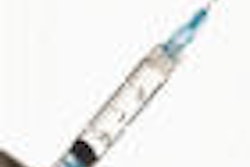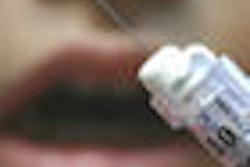Paresthesia occurs more often after use of 4% local anesthetic formulations, according to a study in the Journal of the American Dental Association (July 2010, Vol. 141:7, pp. 836-844).
Researchers from the University of Toronto wanted to determine if the type of local anesthetic administered had any effect on reports of paresthesia in dentistry in the U.S.
They obtained reports of paresthesia involving dental local anesthetics from November 1997 through August 2008 from the U.S. Food and Drug Administration Adverse Event Reporting System. They compared expected frequencies, on the basis of U.S. local anesthetic sales data, with observed reports of oral paresthesia.
During the study period, 248 cases of paresthesia occurring after dental procedures were reported. Most cases (94.5%) involved mandibular nerve blocks. The lingual nerve was affected in 89.0% of cases. Reports involving 4% prilocaine and 4% articaine were 7.3 and 3.6 times, respectively, greater than expected (p < 0.0001) on the basis of local anesthetic use by U.S. dentists.
"To date, results from randomized controlled clinical trials generally have not shown that either 4% prilocaine or 4% articaine is superior to 2% lidocaine in achieving mandibular nerve block," the authors wrote. "Practitioners should take this equivalent benefit into account when comparing the relative risks of these drugs."
The study findings confirm that paresthesia arising from a local anesthetic injection alone is a rare event, they added. "Nevertheless, the findings we report herein support those published previously and show that the 4% anesthetic solutions used in dentistry, namely prilocaine and articaine, are more highly associated with the development of paresthesia than are those of lower concentration."
An abstract of the study will be presented at the International Association for Dental Research conference in Barcelona, Spain, this month.
Copyright © 2010 DrBicuspid.com



















